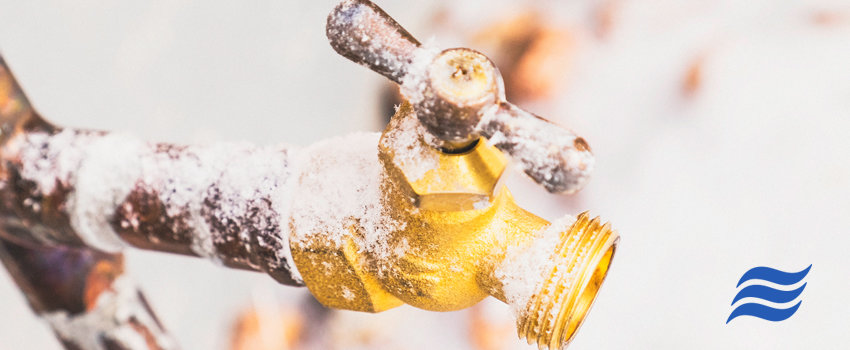
Help! My Pipes are Frozen! How to Unfreeze Pipes
The best way to deal with freezing pipes is to prevent them in the first place, but the chances are if you're reading this it's probably already happened!
When pipes freeze, the water inside expands, which can cause the pipe to burst and flood your home quickly – resulting in a major disaster and and a hefty insurance claim.
The quicker you thaw out your pipes, the less risk your property is under. The cost of repairing a burst pipe can get pretty expensive, depending on your plumber and the scale of damage done.
A bust pipe and the resulting flood damage is the most common homeowners' insurance claim. The average claim is around the $5,000 mark, however the average property owner's loss is closer to $20k-$40k.
How to Prevent Your Pipes Freezing
There are four ways to avoid your pipes freezing in the cold weather:
- Make sure the unheated areas in your home have proper insulation in place. This includes: unheated attics, exterior walls, unheated garages and the floor cavities above unheated crawl spaces. Both hot and cold water pipes should be insulated.
- Make sure to leave your faucets dripping on above-average cold nights, this will prevent the water from settling and freezing.
- Have a backup generator for power outages.
- Check for any open areas in the house where outside, cold air is coming through. This can include: creep spaces, attic spaces, basements and rooms with older windows.
How to Know Your Pipes Have Frozen
There are three possible signs your pipes have frozen:
- If visible, they're covered in frost (or they're bulging out)
- There's some strange smells coming from the faucet/drains
- The faucets aren't flowing, the toilets won't refill and your shower isn't working
How to Thaw A Frozen Pipe
- First thing to do is to shut off your water supply to the section of plumbing where the pipe's frozen. Sometimes knocking it off for the entire house is the only option. It's best to turn it off because the frozen water might be a plug and preventing water from spilling out.
- Next, turn your faucets on and see if any water is moving. To figure out where the frozen pipes are, it's best to check those unheated areas we talked about earlier.
- Once you figure out where they are, you're going to need a heat source to heat those frozen pipes!
- DO NOT USE ANY OPEN FIRE OR FLAMES, you're more likely to burn the house down and take the pipes with it.
Things You Can Use to Heat Frozen Pipes:
- A temporary space heater
- Heat lamp
- Hair dryers
- Heat tape (if in crawl space)
- Hot water (if it won’t cause damage to the surrounding area)
What to Do If A Pipe Bursts
If the worst has already happened and you've got a bust pipe, shut off the water immediately.
Call your plumber straight away (if you're in Northern Virginia, we run a 24/7 emergency service – give us a call on (703) 670-8519)
Next, minimize the water damage by removing as much water as possible. Use mops, sponges, towels, buckets, a wet/dry vacuum – whatever you have at hand.
To minimize the risk of mold and mildew, run a dehumidifier until everything in the room is very dry.
If the flood damage is extensive, call your insurance agent. Most homeowners insurance covers burst pipes and the resulting water damage.
Again, the average damage of a major burst pipe is between $20k and $40k – so do whatever it takes to avoid a burst pipe in the first place!
Get a good plumber in and make sure your pipes have proper insulation before the next frost hits. Give us a call on (703) 670-8519 and let's get your pipes wrapped up!
Check out our other blogs for some great plumbing advice:
-
- How to unclog a blocked toilet
- 5 helpful tips for troublesome toilets
- Is it Time to Replace Your Toilet?
- To Flush or NOT to Flush?
- Plumbing Tricks and Insider Tips of the Trade
- What is the Best Type of Water Heater to Use in Northern Virginia?
- Plumbing Noises and What They Mean
- The 6 Fundamentals of Bathroom Remodeling
- Dropped it Down the Drain… Now What?
- Drain Maintenance 101: Causes & Prevention
- The Water Heater Dilemma – Repair or Replace?
